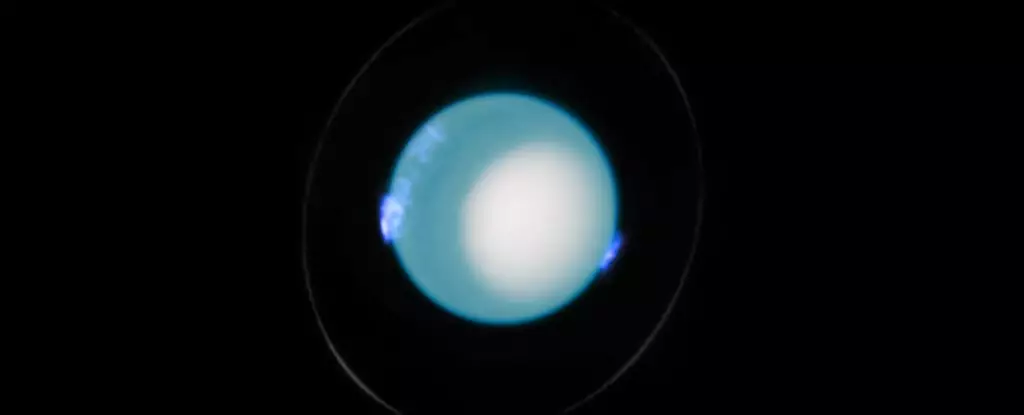Recent research has thrown a spotlight on Uranus, revealing a surprisingly nuanced aspect of our solar neighbor that significantly recalibrates our understanding of the planet’s rotational dynamics. For years, scientists believed a full day on Uranus lasted just 17 hours and 14 minutes—an approximation brought to light by the Voyager 2 spacecraft during its historic flyby in 1986. However, with the latest findings suggesting a duration of 17 hours, 14 minutes, and 52 seconds, we see not only a minor correction of 28 seconds but an invitation to rethink the broader implications of planetary science. This seemingly trivial increment holds profound importance, influencing how astronomers chart out the icy planet’s magnetic poles and navigate its complex atmospheric interactions.
The Challenges of Investigation
Uranus, along with its sibling planet Neptune, occupies a remote realm in our solar system. They elude detailed examination due to their substantial distance from the Sun and the Earth, rendering them faint points of light in our telescopes. This distance has sparked significant challenges in collecting accurate data. In fact, the turbulent atmosphere and obscure characteristics of these ice giants mean that the science of the outer solar system remains underexplored, a reflection of both physical barriers and technological limitations. To date, only the Voyager mission has traversed these cosmic waters, leaving a somewhat outdated castle of knowledge about Uranus and Neptune that now seems in dire need of renovation.
The Catalyst of Change: Hubble’s Insights
Thanks to a thorough scrutiny of data amassed by the Hubble Space Telescope—from 2011 to 2022—an opportunity arose to rectify long-held misconceptions. Understanding how Uranus’s atmosferic auroras behave and interact with solar wind particles was key to this research. Much like Earth’s spectacular northern lights, the auroras on Uranus become points of luminescent intrigue; however, their location is not straightforward due to the planet’s curious axial tilt, which pitches it nearly on its side. Scientists, led by astrophysicist Laurent Lamy, astutely tracked these auroras, employing them as markers to bolster our understanding of the planet’s rotation.
Precision Reimagined: A New Era for Planetary Science
The refined measurement of Uranus’s day is not merely an academic footnote; it is an essential groundwork for ongoing and future studies of the planet. Lamy and his colleagues have achieved a landmark precision—one that surpasses previous measurements, including those of the more well-studied Jupiter. This advancement empowers scientists to develop precise rotational models not only for Uranus but also for other gas giants in our solar system. In practical terms, it revitalizes our capacity to track celestial phenomena over extended timelines, thereby granting astronomers a new rigor in their analyses.
Rethinking Magnetic Dynamics
The critical revelation of Uranus’s day length highlights a more significant challenge in planetary astronomy: maintaining an accurate handle on a planet’s magnetic field. Without consistent measurements, the geolocation of magnetic poles can quickly become unreliable, creating an additional layer of complexity for scientists trying to piece together the dynamics of such distant worlds. Lamy’s work resolves this puzzle, allowing for the establishment of a new longitudinal system that aligns with auroral observations spanning nearly four decades. Such accuracy will be indispensable as we look forward to the next era of Uranus exploration, which promises to deepen our comprehension of this igneous enigma.
Catalyzing Future Exploration
As we stand on the brink of a planned mission to Uranus, the revelations we now possess will serve as a beacon for upcoming explorations. The knowledge gained through this meticulous research adds immense value to strategic planning, potentially ushering in a new chapter in our understanding of the outer solar system. Essentially, the newly established metrics not only revive historical frameworks but also open a floodgate of opportunities for future research, collaboration, and discovery. The cosmic narrative of Uranus, once shrouded in layers of misunderstanding, is poised for transformative clarity, reflecting the ever-evolving nature of science itself.

